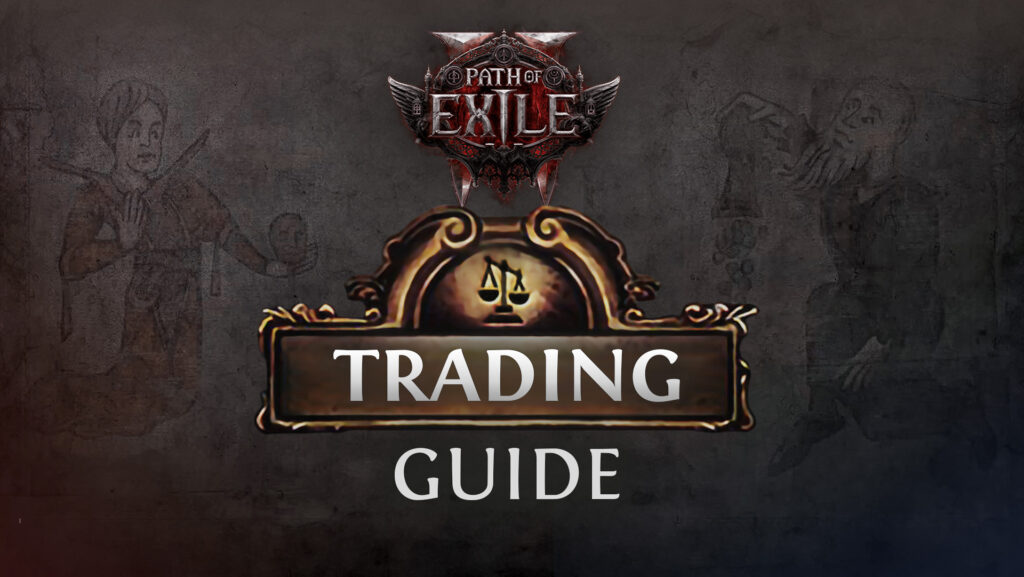Path of Exile 2 (PoE2) introduces an intricate trading system that enhances the player-driven economy, allowing exiles to exchange items, currencies, and crafting materials to optimize their characters and strategies. Understanding the nuances of PoE2 trade is essential for both newcomers and seasoned players aiming to navigate Wraeclast’s treacherous landscapes effectively.
The Evolution of Trading in PoE2
Building upon its predecessor, PoE2 offers a more streamlined and user-friendly trading experience. The introduction of the official trading site has been a significant advancement, providing players with a centralized platform to list and search for items efficiently. This development addresses previous concerns about the complexity and accessibility of trading, making it more intuitive for the player base.

Navigating the Official PoE2 Trade Site
The official PoE2 trade site is designed to facilitate seamless transactions between players. To access the site, visit pathofexile2.com and click on the trade icon, which will direct you to the trading platform. Here, you can search for items using various filters, such as item type, rarity, and specific modifiers, allowing for precise searches tailored to your needs.
Key Features:
- Search Functionality: Input the exact name of an item or use partial keywords with a tilde (~) prefix for broader searches. For example, typing
~res firewill yield items with fire resistance. - Stat Filters: Add specific modifiers to narrow down search results, specifying minimum or maximum values to find items that meet exact criteria.
- Trade Filters: Refine searches based on seller status (online/offline), listing time, and price range to ensure timely and affordable transactions.
Engaging in Direct Player-to-Player Trading
While the trade site is invaluable for listing and discovering items, direct player-to-player trading remains a cornerstone of PoE2’s economy. To initiate a trade, players can:
- Party Invitation: Invite the player to your party or accept their invitation.
- Hideout Interaction: Proceed to the seller’s hideout or have them come to yours.
- Trade Execution: Open the trade window, place the agreed-upon items or currency, and confirm the transaction after verifying the details.
It’s important to note that while gold is a non-tradable currency used primarily for vendor transactions and certain in-game services, other currencies like Exalted Orbs and Divine Orbs are commonly used as mediums of exchange between players.
Utilizing the Currency Exchange System
PoE2 introduces a Currency Exchange system, an asynchronous platform where players can list and trade various stackable items, including:
- Basic Currencies: Chaos Orbs, Exalted Orbs, Divine Orbs, etc.
- Crafting Materials: Essences, Runes, Catalysts, and more.
- Boss Fragments: Items obtained from endgame bosses.
To use the Currency Exchange:
- Selection: Choose the currency you want to acquire and the one you wish to offer.
- Set Ratio: Determine the exchange ratio, with common market rates provided for reference.
- Place Order: Submit your order and pay the associated gold fee, which varies based on the transaction’s scale and item rarity.
Once a matching offer is available, the exchange will process the transaction, and the items will be transferred accordingly.
Best Practices and Trade Etiquette
Maintaining proper etiquette ensures a smooth trading experience for all participants:
- Initiating Contact: When interested in an item, send a polite whisper to the seller expressing your intent to purchase.
- Party Invitations: Allow the seller to invite you to their party; avoid inviting them unsolicited.
- Hideout Protocol: As a buyer, travel to the seller’s hideout unless otherwise agreed upon.
- Trade Confirmation: Double-check all items and currencies in the trade window before confirming to prevent errors.
- Communication: Express gratitude post-trade with a simple “Thank you” or “TY.”
Adhering to these practices fosters a respectful and efficient trading environment within the PoE2 community.

Leveraging Third-Party Tools
To enhance the trading experience, players can utilize third-party applications like PoE Overlay II. This desktop app offers features such as:
- Price Checking: Quickly assess the market value of items.
- Trade Management: Streamline incoming and outgoing trade requests with in-game overlays.
Such tools integrate seamlessly with PoE2, providing real-time data and facilitating more informed trading decisions.
Addressing Common Trading Challenges
Despite the robust trading systems in place, players may encounter challenges such as:
- Account Linking Issues: Some players report difficulties with account synchronization between PoE1 and PoE2, affecting trade capabilities. Ensuring proper account linking and consulting official support forums can help resolve these issues. webcdn.pathofexile.com
- Trade Scams: As with any player-driven economy, the risk of scams exists. Always verify trade contents carefully and be cautious of deals that seem too good to be true.
